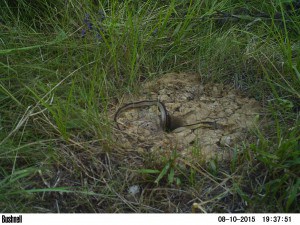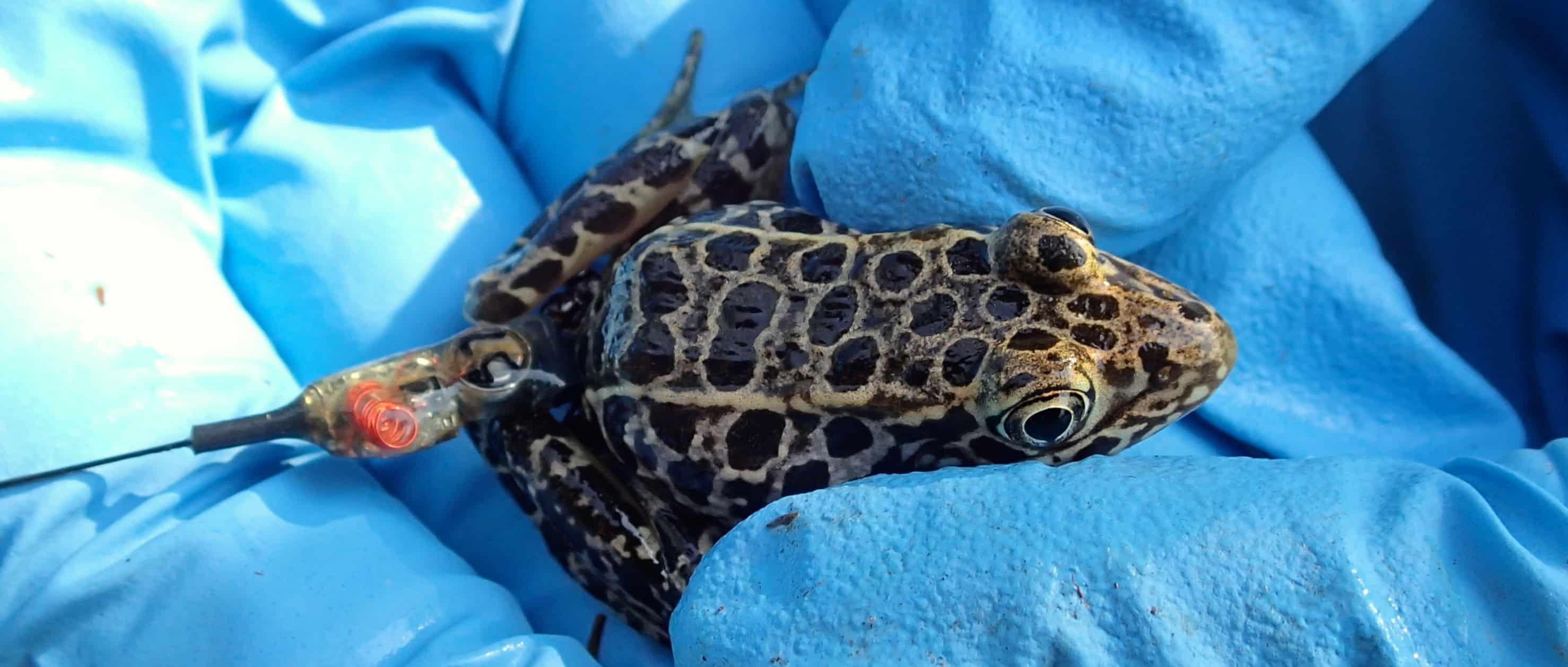Share this article
Uncovering Natural History of Endangered Frog
The reclusive crawfish frog hasn’t been studied much — until now.
The federal government recently funded a state wildlife grant to carry out local conservation research on the frogs endangered in Indiana that can spend up to 11 months in a year hidden away in crayfish burrows.
“Crawfish frogs are a secretive species,” said Jonathan Swan, a graduate student researching the species as an ongoing project at Indiana State University. “We’ve known about them since the mid to late 1800s. Despite knowing about them for some time, their life history and behaviors prevented work from being done on them.” Swan is working with his adviser and professor of anatomy and cell biology at Indiana University Michael Lannoo to learn more about the species.

A common gartersnake (Thamnophis sirtalis) occupies an artificial crayfish burrow. Researchers installed camera traps to monitor crawfish frogs.
Image Credit: Bushnell Trophy Cam Model 119436
In an effort to help with the conservation of the species, Swan released juvenile frogs into artificial burrows that he created and monitored them for two months. By mimicking crayfish burrows, Swan hoped to increase the survival rate of the frogs in their early stages following metamorphosis, which is a critical time for their survival success. Swan created burrows that were four feet deep so that there wouldn’t be any freezing when the frogs were wintering and there would be enough moisture in the air at the bottom of the burrows.
Within the population Lannoo’s team is studying, there are about 300 frogs. In the state, it’s estimated that there are up to 1,000, and east of Mississippi, there are less than 4,000 adults. Adults can live up to 10 years, but to restore the population, it’s important for more juveniles to survive, which is no easy feat. Previous research showed that only three to four percent of juveniles survive to breed as adults, Swan said.
As part of their research, after releasing juvenile frogs into artificial burrows as well as reptariums — cages placed in ponds used to keep the frogs housed and protected — researchers monitored the frogs’ behavior through wildlife camera traps placed next to the burrows, and found that they have a propensity to move, which decreased with time after their metamorphosis. In the photographs, the researchers also observed some snake predation while the frogs were at the burrows. They also put radio transmitters on a small subset of juveniles to determine where they were moving to. In one instance, a frog moved from an artificial burrow to a crayfish burrow, only to be eaten by a common gartersnake.
The dispersal stage for the frogs is important, Swan said, especially since survivorship has a lot to do with metamorphosis to adulthood. “When looking at the focus of conservation, we want to find what management practices are viable to support frogs in the future,” he said. “We found that for management, the artificial burrows at the field site worked well.” Swan said that the point is to provide juvenile frogs a cover to stay moist while they are on the move. “The impetus is for them to move and locate another [burrow],” he said. “We just need to get them past the first week.” Lannoo plans to monitor the population and its success in the future.
Header Image: An endangered juvenile crawfish frog fitted with a radio transmitter.
Image Credit: Michael Lannoo








